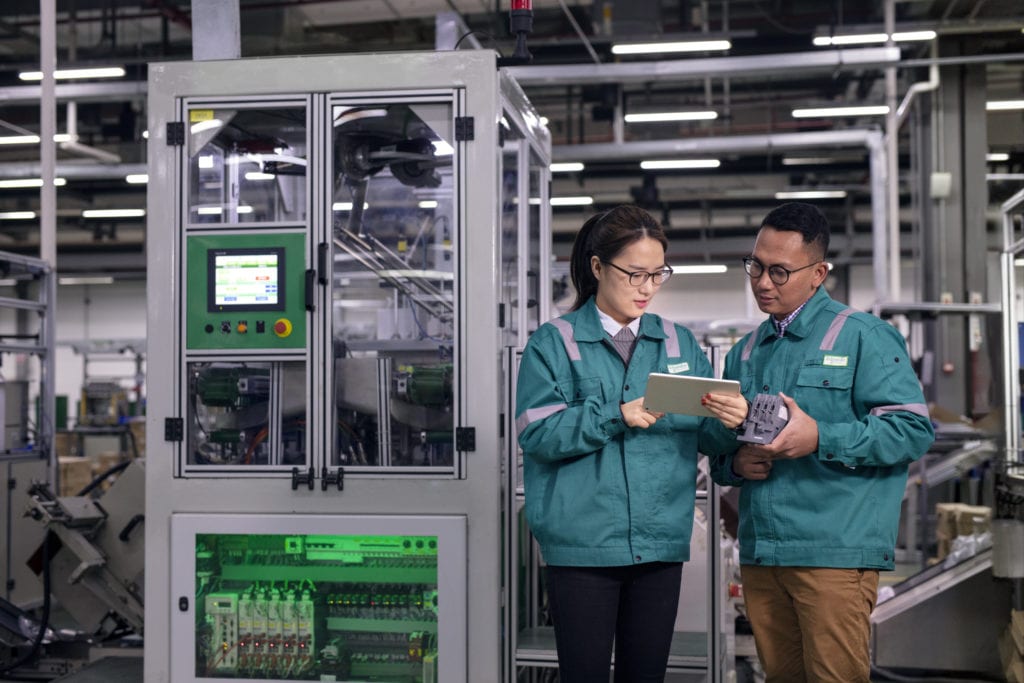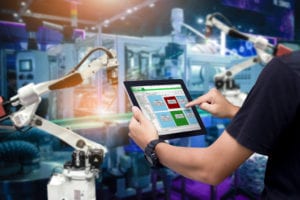 In the fast-changing world of industrial automation, it makes little sense to spend time trying to predict the future. It makes more sense to build it. Industrial firms wishing to build competitive advantage should focus on implementing innovation, thereby placing themselves in a better position to influence the future of their particular industrial marketplace. Achieving next generation industrial efficiency or resiliency and sustainability gains will require bold moves. Those moves will manifest themselves as step changes, not piecemeal, tentative steps.
In the fast-changing world of industrial automation, it makes little sense to spend time trying to predict the future. It makes more sense to build it. Industrial firms wishing to build competitive advantage should focus on implementing innovation, thereby placing themselves in a better position to influence the future of their particular industrial marketplace. Achieving next generation industrial efficiency or resiliency and sustainability gains will require bold moves. Those moves will manifest themselves as step changes, not piecemeal, tentative steps.
I meet with industrial executives on an ongoing basis. Many assume that these bold moves will principally involve deployment of innovative technology. However, the transition to a future where digitization insights are converted to tangible actions will also require a reinvention of the way people collaborate across their on-premise and virtual industrial workplaces.
At stake is the ability to provide industrial workers with realtime holistic views of their business to drive better sustainability, efficiency, agility and profitability outcomes. Future operators, engineers and technicians will want to feel a greater sense of purpose and empowerment in their jobs.
Three Pillars for Achieving the Industry of the Future
To achieve promised benefits of the next generation industrial environment, underlying technology infrastructure designs will need to incorporate and support three important attributes:
-
Data driven software-based automation
Smart manufacturing will be realized when industrial stakeholders prioritize investments towards innovative software and services that enable the gathering and analysis of data, rather than to traditional hardware. Early evidence of significant data-driven cost savings and shorter time-to-market product deliveries are evident through the use of software tools such as digital twins which allow for the simulation of scenarios without having to invest in hardware to validate a proof of concept. In addition, “remote everything” will begin to dominate investment trends. The added dimension of not requiring experts to be physically on site to manage operations increases flexibility, further enhances the scope of influence of these subject matter experts, and further safeguards worker health and safety.
-
Truly open systems
“Open” automation as it exists today is not open enough. The world of propriety, locked-in industrial automation models no longer addresses the challenges of a more complex, fast-changing marketplace. Industrial workers want open, modular, and interoperable systems because they need flexibility, efficiency, and speed to get their jobs done. In such an environment, the concept of “universal” automation is beginning to gain traction. Universal automaton, which is open and collaborative, but based on standards, introduces users to a world of “plug and produce” applications (like the IT app store concept). It enables “à la carte” automation where cost and performance are optimized by assembling components without regard to vendor. In such a universal automation world, software is decoupled from the underlying hardware.
As a result, human-centric automation architectures can be designed that allow users to exercise greater control and to make improvements to key business variables, most notably, profitability. The vendor agnostic nature of universal automation means better interoperability. Reuse of existing assets in a modern context–regardless of the vendor who produced them–provides an easy and cost-effective method for keeping systems flexible and up-to-date.
-
Integration of energy and automation
The connectivity and integration of power and automation enables visibility and control of real-time performance. As a result, plant operators and engineers see a measurable impact of their actions on both profitability and sustainability at every stage in the plant lifecycle. From a profitability perspective, merging electrical distribution and the process automation design and deployment means that less time is spent transitioning from project design phases to operational phases. Combined power and process solutions also require less physical space thereby reducing plant footprint. In addition to reduced downtime and an improvement of operating margins, our field experience indicates that integration of energy and automation reduces project capital costs an average of 15%.
In addition, by capturing and analyzing energy data across the various stages of the value chain, sustainability reporting become significantly more precise. Data from integrated energy and automation systems enable measurement of an energy consumption baseline, documentation of energy performance data, comparisons to other facilities and sites that are similar in profile, and analysis of how energy-saving initiatives and investments are driving positive sustainability impact.
Beyond simple compliance to regulatory standards, pro-sustainability actions can now be documented and communicated to communities and groups that monitor corporate social behaviors.
Developing a tight ecosystem of partners
Implementing these step changes and accruing the associated business benefits will require every company to develop a tight ecosystem of partners. The next generation of industries cannot be achieved by working with any single company or vendor. In addition to sharing expertise, strategic partners need to pursue the priorities of augmenting the efforts of workers through digital tools, demonstrate an ability to tightly link with existing technologies, and enable flawless integration of products across many brands.
An early example of this tight coordination is the partnership between Schneider Electric and AVEVA. As AVEVA design software tools merge with Schneider Electric plant automation software, a true unified engineering approach is now deployable. For engineers, unnecessary layers of software interfaces and the related manual work required to integrate and process updates are eliminated. The Schneider Electric EcoStruxure architecture contributes to this “plug and produce” environment by supporting integration across the entire digitalized plant. The architecture includes an open but tailored stack of connected products, control level software, and cloud-based services.
*******************
This message was part of our Innovation Summit World Tour 2020. Making 11 virtual stops around the world, we welcomed over 20,000 customers, partners and students through the virtual doors and into the discussion on how we can build a more resilient and sustainable future together.
If you want to discover more from the event, we invite you to read the following articles:
- Building Resilient and Sustainable Data Centers
- How digitization helps deliver healthier hotels–and happier guests
- Hospital resiliency during a pandemic—Expert Insights
- Expert Insights: Smart Building Technology Drives A Safer Workplace
- Securing the IT-OT Convergence for Cybersecurity Solutions
- Cracking Digital for An End-to-End Traceability Journey
- 5 ways IEC 61499 is liberating Industrial Automation
- 3 Ways Smart Machine Lifecycle Digital Solutions Bolster Industrial Plant Flexibility
- Two technologies available today to resolve climate change



